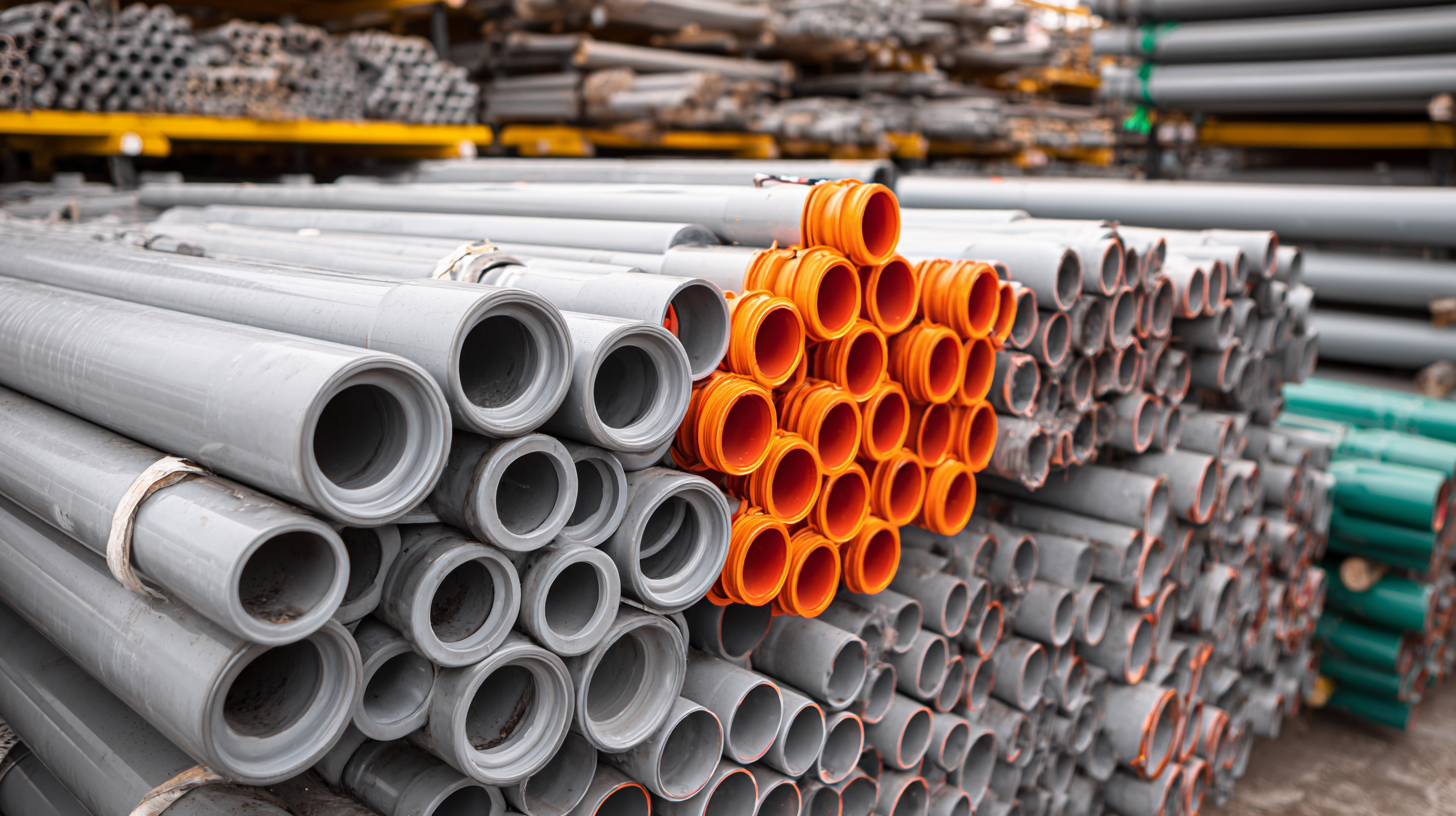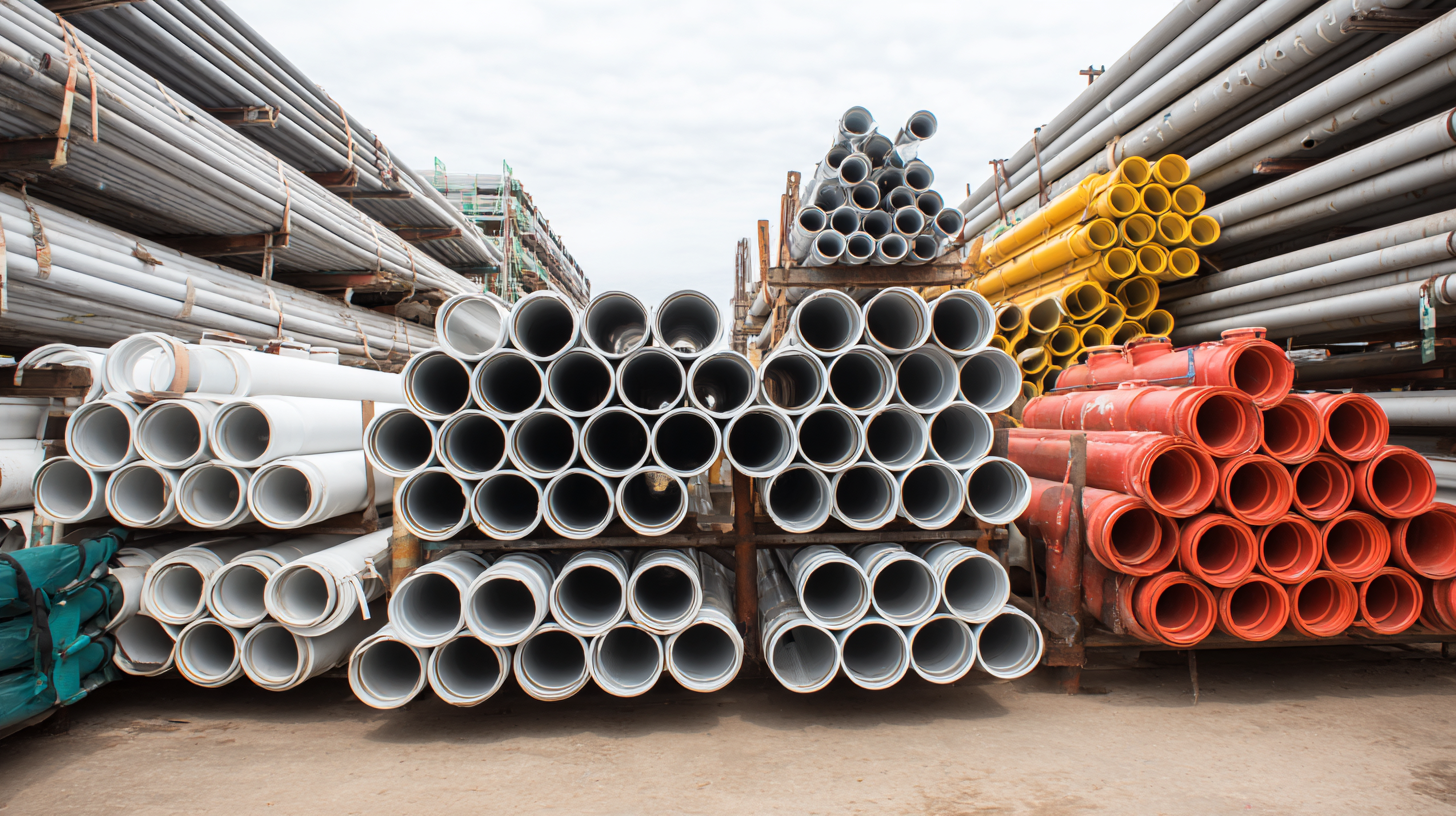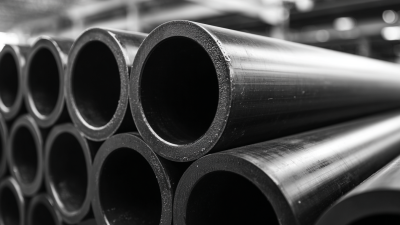-
Products and Systems
Products and Systems
Vinidex manufacturers and supplies a broad range of products & systems to suit a range of applications.
-
Solutions
Solutions
Vinidex’s products and systems are versatile and can be used in a variety of markets and applications.
- Resources
-
The Ultimate Guide to PVC Pipes and Fittings: Exploring Benefits, Standards, and Market Trends
In recent years, the market for PVC pipes and fittings has witnessed substantial growth, driven by the increasing demand for durable and cost-effective plumbing solutions across various sectors. According to a report by MarketsandMarkets, the global PVC pipes market is projected to reach USD 73.67 billion by 2025, growing at a CAGR of 7.2% from 2020 to 2025. This growth is propelled by the versatility and adaptability of PVC materials in construction, agricultural, and infrastructure projects. PVC pipes and fittings are preferred not only for their lightweight nature and ease of installation but also for their resistance to corrosion and chemicals, making them ideal for both residential and commercial applications. Understanding the benefits, industry standards, and emerging market trends is essential for stakeholders eager to capitalize on the opportunities within this dynamic segment of the plumbing industry.

Key Advantages of Using PVC Pipes in Various Applications
PVC pipes have become a cornerstone in various applications, offering significant advantages over traditional materials. One of the key benefits of PVC is its remarkable resistance to corrosion, which extends its lifespan considerably. According to a 2021 report by the Plastic Pipe Institute, PVC pipes have a service life of 50 years or more, making them an excellent investment for water and sewage systems. Additionally, their lightweight nature reduces transportation costs and makes installation easier compared to heavier materials like metal.
The cost-effectiveness of PVC pipes is another major advantage. A study conducted by MarketsandMarkets forecasts that the global PVC pipe market will grow from USD 55.81 billion in 2021 to USD 75.16 billion by 2026, primarily driven by the increasing demand in construction and irrigation sectors.
Furthermore, PVC's low thermal conductivity means reduced energy costs in systems where temperature maintenance is crucial, further enhancing its appeal in various applications. As industries continue to recognize these benefits, the adoption of PVC pipes is expected to rise, solidifying their role as a standard in plumbing and beyond.
Essential Standards and Regulations for PVC Pipe Manufacturing
When it comes to PVC pipe manufacturing, adhering to essential standards and regulations is crucial for ensuring product quality and safety. Key organizations like the American National Standards Institute (ANSI) and the American Society for Testing and Materials (ASTM) establish guidelines that manufacturers must follow. For example, ASTM D1785 outlines the dimensional and pressure requirements for PVC pipes, ensuring they can withstand demanding applications. According to a 2022 market report by Freedonia Group, compliance with these standards is integral to maintaining market competitiveness and consumer trust, as over 70% of industry players prioritize certified quality in their supply chain.
Tips: When selecting PVC pipes, look for markings indicating compliance with ANSI and ASTM standards. This ensures that the products you choose are reliable and safe for your specific use cases.

Moreover, understanding local regulations, such as the National Pipe Thread (NPT) standards, is essential for manufacturers aiming to distribute their products across varying jurisdictions. Compliance not only helps in avoiding legal repercussions but also enhances the product's reputation in an increasingly environmentally conscious market. Market research suggests that manufacturers who prioritize compliance enjoy a 15% higher customer retention rate, highlighting the value of standards in customer loyalty.
Tips: Regularly reviewing and updating your knowledge of industry standards can help your business stay ahead and adapt to new regulations, ensuring uninterrupted operations and regulatory compliance.
Current Market Trends Shaping the PVC Pipe and Fittings Industry
The PVC pipe and fittings industry is currently witnessing significant market trends that are shaping its future. One notable trend is the increasing demand for sustainable and eco-friendly products. As consumers and manufacturers alike become more environmentally conscious, the focus has shifted toward PVC products that are recyclable and contain fewer harmful additives. This shift not only caters to market expectations but also aligns with global sustainability goals, paving the way for innovative manufacturing practices.
Tip: When selecting PVC pipes and fittings, always check for certifications that indicate compliance with environmental standards to ensure you're making a responsible choice.
Another trend driving the market is the rise in infrastructure development projects across emerging economies. As urbanization continues to expand, the need for reliable water supply and drainage systems is becoming more pronounced. This presents a lucrative opportunity for PVC manufacturers, as the versatility, durability, and cost-effectiveness of PVC make it an ideal choice for both residential and commercial applications.
Tip: Consider the long-term performance and maintenance costs of PVC solutions to make a more informed investment for your projects.
Tips for Selecting the Right PVC Fittings for Your Project
When selecting the right PVC fittings for your project, it’s essential to consider several key factors to ensure optimal performance. Start by evaluating the intended application of the PVC system. For plumbing, you may need pressure-rated fittings, while for drainage, standard fittings will suffice. Additionally, consider the diameter and type of pipe you are using, as compatibility is crucial for a seamless installation.
Quality is another significant aspect to look into when choosing PVC fittings. Opt for reputable brands known for their durability and reliability. Selecting fittings made from high-quality PVC will not only enhance the longevity of your plumbing system but also reduce the likelihood of leaks and failures. Finally, pay attention to local plumbing codes and standards, as compliance with these regulations is essential for safety and performance in any plumbing project. By taking these tips into account, you'll ensure a successful installation that meets your project’s specific needs.
The Ultimate Guide to PVC Pipes and Fittings: Exploring Benefits, Standards, and Market Trends
| Dimension | Metric Measurement (mm) | Common Use Case | Benefits | Standards Compliance |
|---|---|---|---|---|
| PVC Pipe - 20mm | 20 | Water Supply | Lightweight, Corrosion-resistant | ASTM D1785 |
| PVC Pipe - 50mm | 50 | Drainage Systems | Durable, Cost-effective | ISO 161-1 |
| PVC Fitting - Elbow | Varies | Piping Direction Change | Flexible Installation | NSF/ANSI 61 |
| PVC Fitting - Tee | Varies | Branch Pipe Connection | Versatile Use | ASTM D2466 |
| PVC Pipe - 100mm | 100 | Sewerage | High Flow Capacity | DIN 8062 |
Common Installation Mistakes to Avoid When Working with PVC Pipes
When working with PVC pipes, avoiding common installation mistakes can save you time, effort, and resources. One frequent error is not properly cleaning the pipe ends before joining them. Dirt, grease, or moisture can hinder the effectiveness of solvent cement and lead to leaks. Always clean the surfaces thoroughly using a cloth and appropriate cleaning solution for a strong bond.

Another common mistake is underestimating the importance of the correct cement application. Applying too little can result in weak joints, while excessive cement can create a mess and even void warranties. Tips for effective application include using the right type of cement for your specific PVC pipes and fittings, and following the manufacturer's instructions regarding drying times.
Finally, failure to account for expansion and contraction of PVC pipes can lead to structural issues down the line. As temperatures change, PVC can expand or contract, which may result in stress on the joints. To mitigate this, make sure to leave adequate space for movement and use expansion fittings where necessary. These precautions will enhance the longevity and reliability of your PVC installations.



